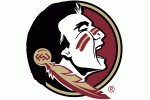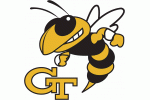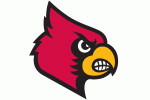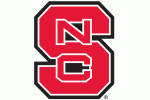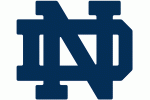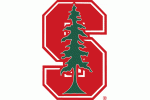With 2012-13 season over, it’s time to look ahead at the most important position in basketball, the point guard spot. If you came looking for experienced floor generals, then I suggest looking elsewhere, because in the ACC, the point is a young man’s profession heading into 2013-14. The conference will feature just two senior point guards, three juniors, eight sophomores and two potential freshmen as starters. However, don’t be too fooled by the youth movement, 11 of those 15 point guards started at some point last year.
1. Quinn Cook, Duke
He’s cool, he’s calm and he has a good feel for Mike Krzyzewski’s offense. He’s a solid three-point shooter (39-percent) and an even better FT shooter (88-percent). He’s an excellent floor general and he is always looking to get his teammates involved. Of all the returning point guards, Cook is tops in assists and assist-to-turnover ratio. My biggest complaint from last year was his inability to beat his man off the dribble. He came into college as someone who could do just that, yet he really struggled to penetrate the lane last year. If he can’t create his own shot, the next three guards could all pass him on this list by season’s end.
2. Eric Atkins, Notre Dame
The senior floor general is a two-year starter, who has averaged 38 minutes per game the past two seasons. He’s a bit on the skinny side, so he can get into trouble against stronger guards, but overall he rarely makes a bad decision, always playing at his pace. He knows how to find his teammates in good spots (fourth in the Big East in both assists and assist-to-turnover ratio). He’s not explosive and won’t attack the rim too often, but he is arguable the best three-point shooter on this list.
3. Marcus Paige, North Carolina
As a freshman, I wouldn’t say he had a good year, although it wasn’t tragic either. Fact is, a lot was being asked of him. Despite being a good ball handler with basketball IQ, Paige struggled to handle the fast pace Tar Heels offense. He turned it over way too much, producing a bad 1.9 assist to turnover ratio. He’s not the most explosive guy on the court, but Paige too often settled for jumpers (nearly half his shots were jump shots). He averaged just two free throws per game. Carolina fans are expecting a nice freshman to sophomore jump, as do I. However, I’m curious to see how he will handle knowing freshman Nate Britt is sitting on the bench. Will it relieve some pressure knowing he doesn’t have to do it all by himself, or will he always be looking over his shoulder?
4. James Robinson, Pittsburgh
The sophomore is getting his first opportunity to play point guard, after playing primarily off the ball his freshman year. He’s a pass-first thinker, who rarely turns the ball over (second in the Big East in assist-to-turnover ratio). He’s not a scary defender, but he’s got a good frame and is not afraid to use it to keep opponents unhappy. As a shooter, there is plenty of room for improvement. He’s good at getting to the lane, but he’ll need to hit more treys to keep defenders honest.
5. Anthony Barber, North Carolina State
The incoming freshman is the #6 rated point guard (according to ESPN). He’s extremely quick, capable of beating his man off the dribble and getting into the lane seemingly at will. He’s also an aggressive defender, who loves to create turnovers by jumping passing lanes, and turning defense into offense. The big question mark is, can he handle the pressure of being the second most important guy on NC State? With every starter gone from last year’s squad, after T.J. Warren, Barber is next in line for go-to label.
6. Joe Rahon, Boston College
The Eagles’ sophomore point guard isn’t the quickest player on the court and occasionally struggles with his shot, but he played over 35 minutes per game last year as a rookie because he knew how to make his teammates better. He’s a strong point guard, capable of muscling his way into the lane, not afraid of a little contact. Last year, he was 7th in assists and 8th in assist-to-turnover ratio in the conference. He played his best ball at the end of last season, so look for a solid jump in production heading into year two as he continues to work along side Olivier Hanlan in the B.C. backfield.
7. Tyler Ennis, Syracuse
He’s the only true point guard on Syracuse’s roster, so whether he’s ready or not, the keys are his. Ennis is not what you call a gifted athlete. He’s not going to beat defenders with any kind of raw speed. Instead, he has great basketball IQ, is good at finding open spots and a crafty finisher in the lane. He’s at his best pushing the ball because he always has his head up, looking for the one pass that will produce a bucket. The trick for him is, can he produce in a slower half-court offense and can he handle the infamous Jim Boeheim zone?
8. Ian Miller, Florida State
Miller came to Florida State and he was expected to be the next Toney Douglas, a clutch, score-first point guard. He made great strides from his freshman to sophomore years. He was expected to be one of the top point guards in the ACC his junior year…but then the wheels fell off, or rather, the foot came off. Dealing with a bad foot injury that refused to heal (and kept him out of practice), Miller’s stats took a stunning drop. He couldn’t get into the lane and his outside shot was lucky to hit the rim, let alone go into the basket. With his foot injury completely healed, look for Miller to regain his confidence and his scoring touch.
9. Angel Rodriguez, Miami
First, we don’t even know if the Kansas State transfer will be able to get a hardship waiver. If he doesn’t, go ahead and drop Miami’s point guard, whoever it is, to the bottom of the list. Rodriguez is a bit undersized, 5-11, but he’s a pass-first point guard, not afraid to attack the paint. However, his shot needs a ton of work. For his career, the junior is shooting just 36-percent from the field.
10. Seth Allen, Maryland
The sophomore point guard has a lot of qualities you look for in a PG. He’s lightening quick (probably the quickest player in the ACC), capable of getting into the paint. He’s got good size and is a creative finisher in traffic. He scored in double figures in 13 games last year, despite sharing the point guard spot with two other players. Yet, why is Mark Turgeon searching the nation for point guard transfers? Well, Allen tends to play out of control, can be loose with the ball and took some pretty stupid shots last year. He also struggled to defend, which is never a good quality to have. Still, like Marcus Paige, I could see Allen making a solid improvement heading into season two.
11. Marquis Rankin, Virginia Tech
A lot will be asked of Rankin this coming season. With Erik Green and his 25 PPG gone, James Johnson will be giving a lot of playing time to a lot of freshmen. Along with Jarell Eddie, Rankin may be the most important player on Virginia Tech. He’s a bit undersized, with zero length, but he’s quick and dangerous in open court, capable of covering a lot of ground fast. He’s got a solid first step and can finish in the lane with both hands. Still, he struggles among the trees and his jump shot is less than impressive. On the defensive side of the ball, he can be manhandled and truly lacks focus at times.
12. Codie Miller-McIntyre, Wake Forest
A solid hard-nose point guard, Miller-McIntyre has good size (nearly 200 pounds) and is not afraid to use it. He’s not an above the rim player, but can hit a solid mid-range shot from around the free throw line. As a distributor, CMM’s got good vision and is good at finding slashers, although there aren’t a lot of good slashers on Wake’s squad. He’ll need to work on his foot work on the defensive end, plus gain some confidence from outside. He only hit about 32-percent of his three-point shots last year.
13. Jordan Roper, Clemson
The Tigers point guard came on strong at end of his freshman year. In fact, he may be the most skilled offensive threat of all the guards Brad Brownell has. He can create his own shot and when off the ball, he’s a solid catch-and-shoot scorer. However, his height (5-11) and size (155) are a problem. He’ll need to gain muscle, but he also needs to work on head fakes and pulling up in traffic, because it’s not like he’s going to suddenly be 6-2 next year. On the defensive side, he has proven to be a good thief, but struggles against bigger opponents.
14. Teven Jones, Virginia
First things first, we don’t even know for sure if Jones will start. Tony Bennett has two freshmen point guards coming in and one in particular that I like, London Perrantes, could certainly compete for minutes. Having said that, Jones was a serviceable backup to Jontel Evans last year, actually starting nine games. He also came in a semester early, so technically he’s had a year and half to figure out Tony Bennett’s complicated system. Jones is a scoring point guard. Yes, he averaged just 2.9 PPG from the floor as a freshman, but he did average 22 points per game his senior year of high school, so the potential is there as the minutes come. The problem is, he was streaky last year and he would often find himself sitting on Bennett’s bench for long periods of time during games.
15. Soloman Poole, Georgia Tech
As a freshman, Pools showed some minor flashes with his limited time on the floor. He’s quick with the ball in his hands, has a solid first step and is capable of beating his defender to the rim. However, he wants to be a scorer. His game resembles that of a shooting guard, but standing barely six-feet tall, he has the body to run the point. This explains why he made just 14 shots all of last season. He’s expected to be the starter next year, replacing the underrated Mfon Udofia. If he wants to keep the job, he’s going to need to work on being a leader and a distributor to Georgia Tech’s solid wing players.






